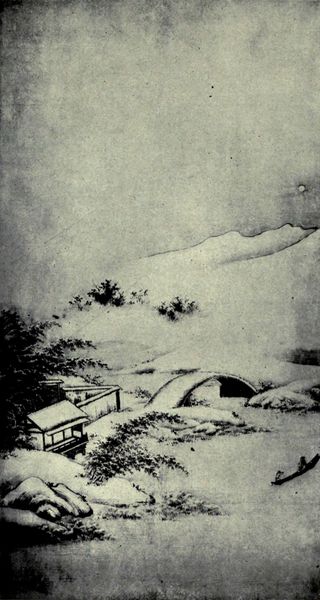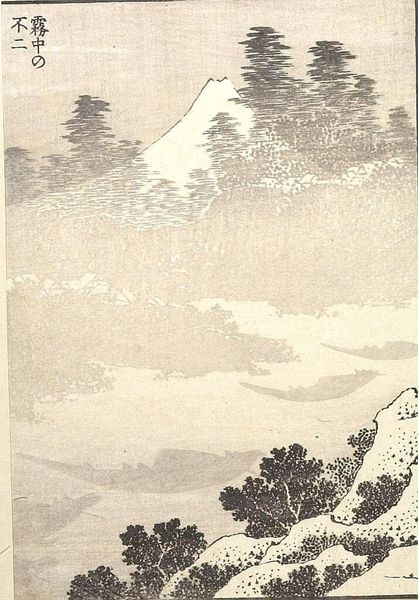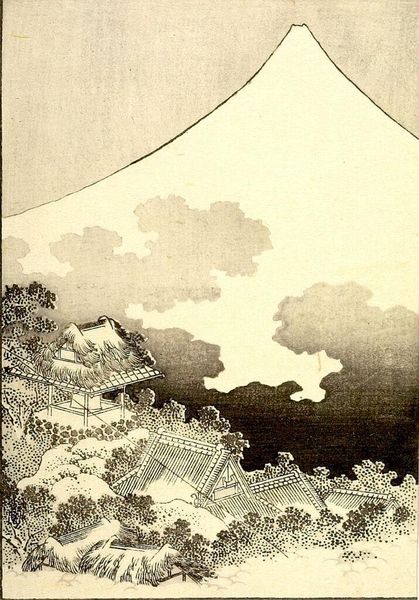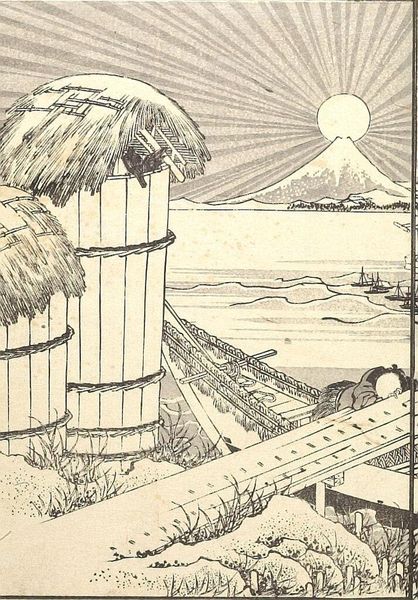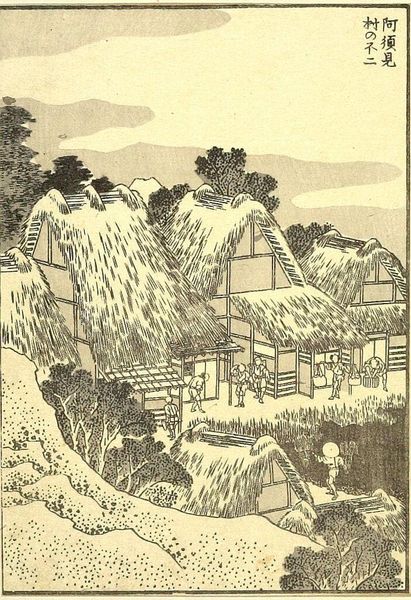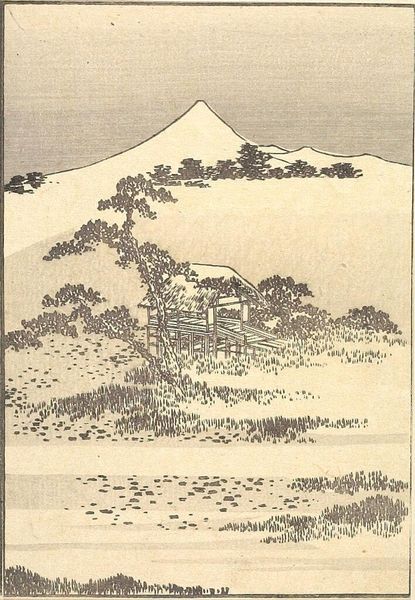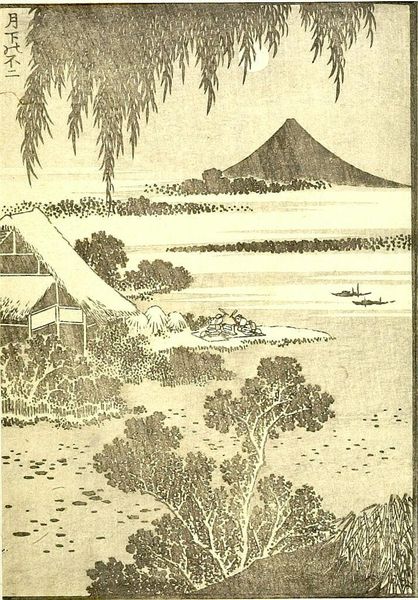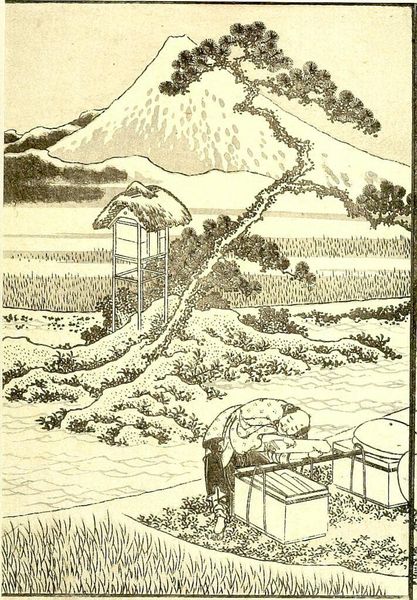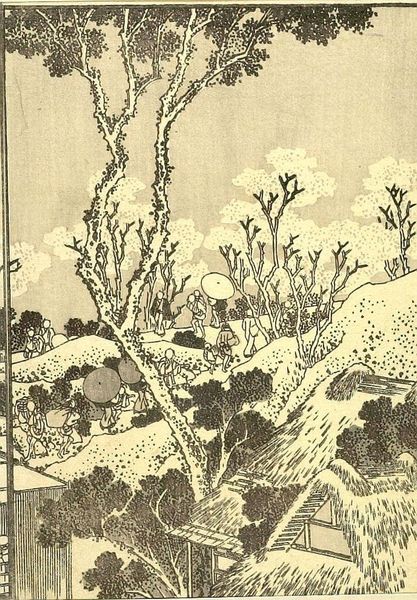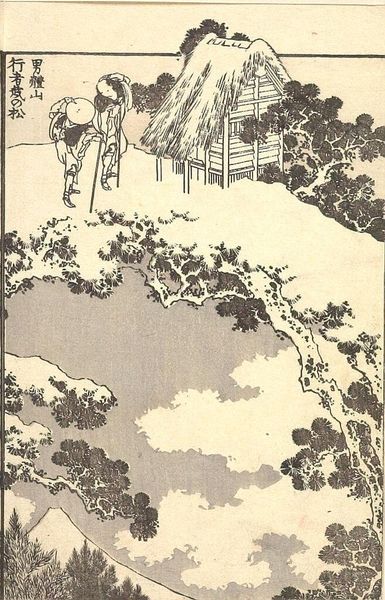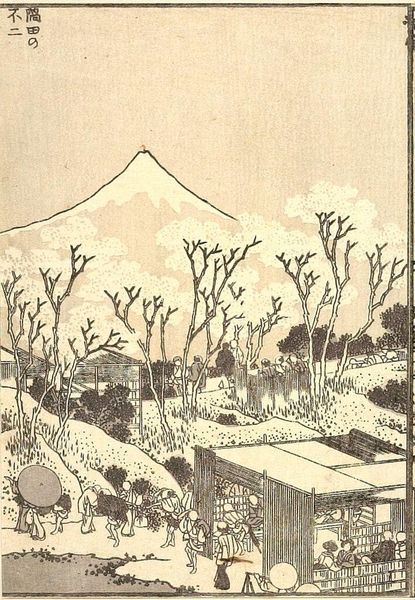
Fuji at Tanabata (Tanabata no Fuji): Detached page from One Hundred Views of Mount Fuji (Fugaku hyakkei) Vol. 1 Possibly 1834 - 1835
0:00
0:00
Copyright: CC0 1.0
Editor: This is Hokusai's "Fuji at Tanabata" from his "One Hundred Views of Mount Fuji." It's a woodblock print, and I find the rooftops so prominent, almost obscuring the sacred mountain itself. What do you make of this composition? Curator: It's a fascinating inversion, isn't it? Consider the Tanabata festival—a celebration of connection, often between the earthly and the celestial. Hokusai positions us amidst the everyday, the roofs suggesting human activity and domesticity, while Fuji, often a symbol of power and permanence, becomes a backdrop. What does it mean to frame the iconic through the lens of the ordinary? Editor: So, you're suggesting that Hokusai is perhaps democratizing the icon of Fuji, bringing it down to the level of the common person? Curator: Precisely! It invites us to consider how national symbols are experienced and interpreted within diverse social contexts. The very act of viewing, mediated by the rooftops, becomes a commentary on accessibility and representation. What are your thoughts? Editor: I never thought of it that way. It’s made me re-evaluate my understanding of how symbols are understood by different people. Curator: Exactly! And that’s how we can have a more intersectional view of art history.
Comments
No comments
Be the first to comment and join the conversation on the ultimate creative platform.

